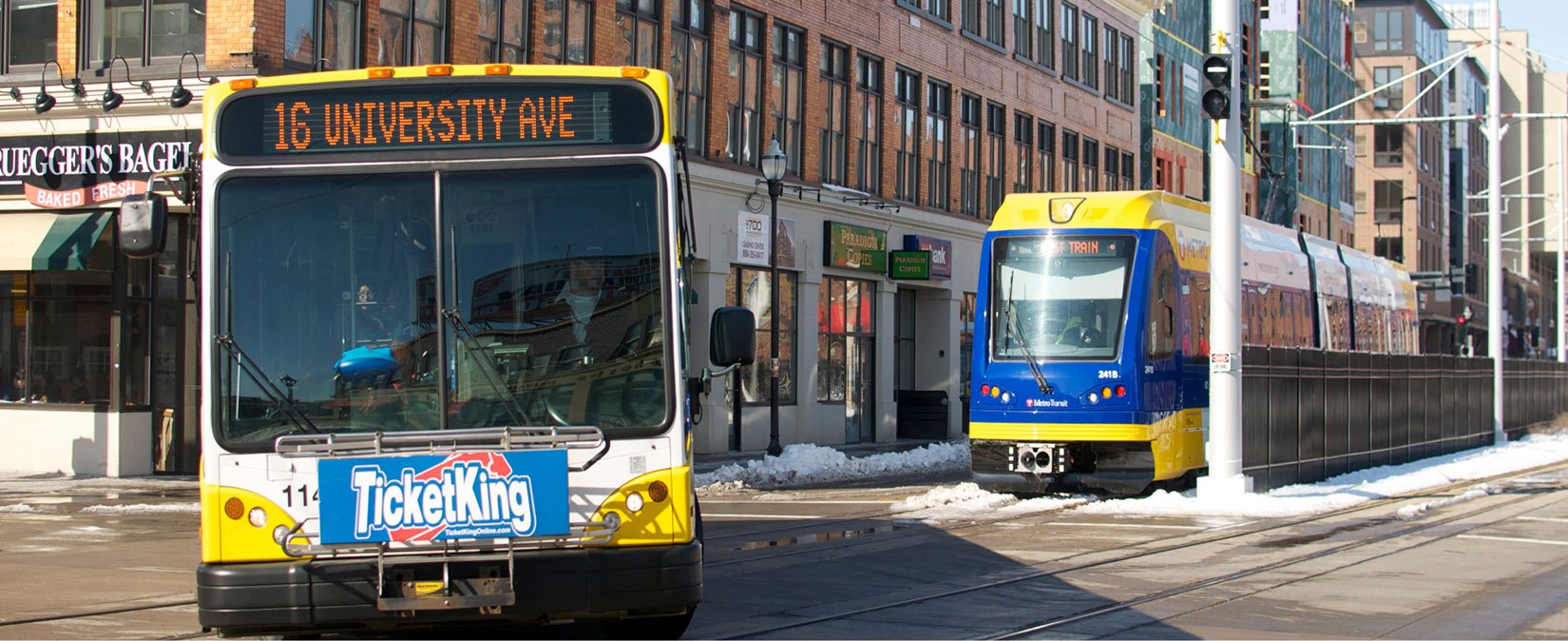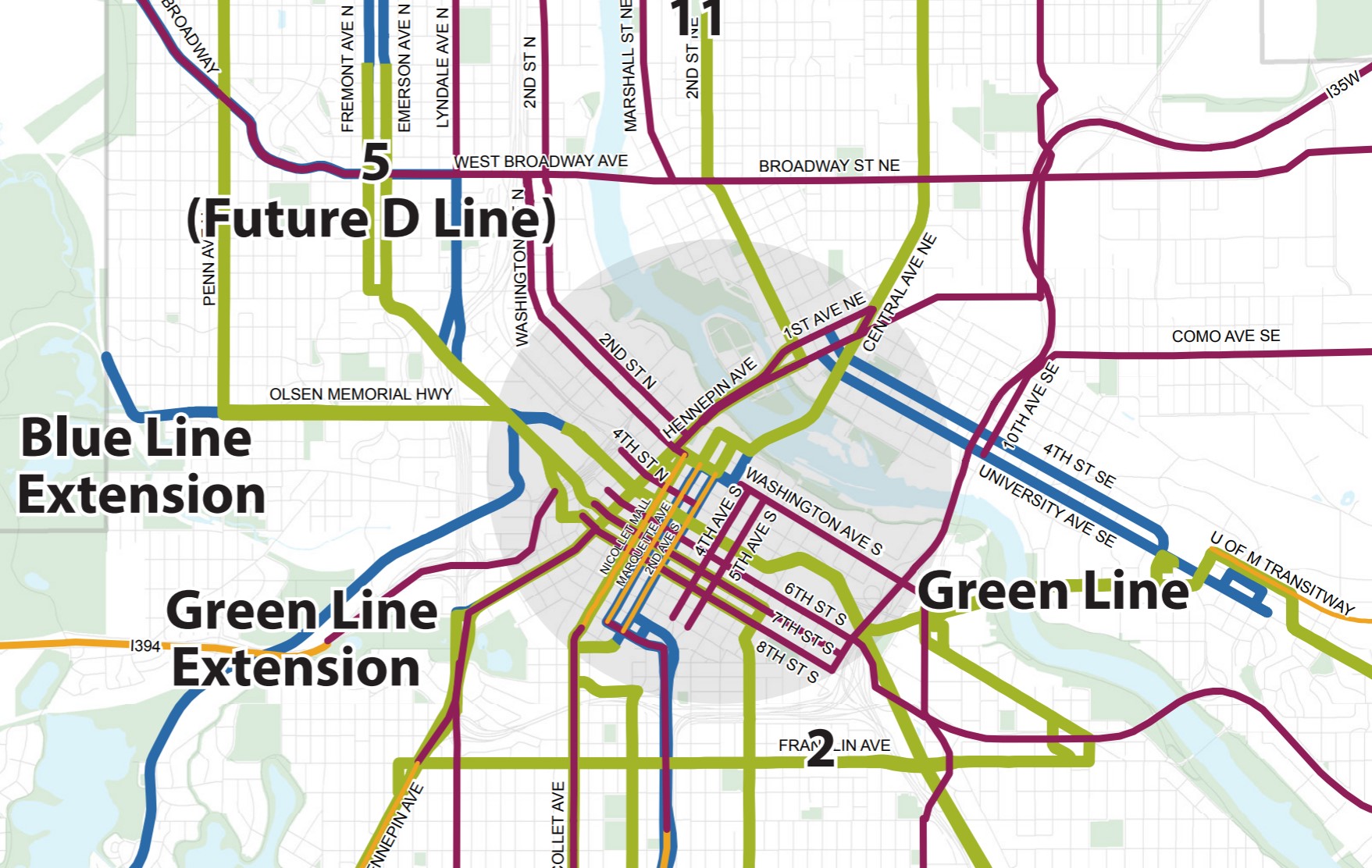
Transit is a central component of Minneapolis 2040 and throughout the engagement process for the TAP we repeatedly and clearly heard that people want reliable access to transit. Transit is a critical foundation for the City’s multimodal transportation system while also contributing to economic competitiveness by attracting business, private investment, and top talent to the city. Over 30,000 (16.5%) households in the city do not have access to or choose not to own a personal car, with the highest concentration of car-free individuals living in neighborhoods around downtown Minneapolis.1 The comprehensive plan calls for more growth in population and jobs, focused along and near transit corridors.
To effectively plan for this growth, the City will partner with the Metropolitan Council to plan for and invest in a transit priority projects that aim to improve the coverage, speed and reliability of transit service. The Metropolitan Council provides a backbone of service and operation, and the City of Minneapolis, through this chapter of the Transportation Action Plan, defines a clear set of priorities, goals and actions for the city.
Transit must be convenient, reliable, and frequent to effectively reduce trips made by single occupancy vehicles. In 2010 people took transit for 13% of their trips (including 2% by school bus). Our goal is to increase that to 1 in 4 trips (25%) by 2030.2
- Household Size by Vehicles Available, U.S. Census Bureau, 2013-2017 American Community Survey 5-Year Estimates
- Note for draft plan: The 2010 data is anticipated to be updated by the Metropolitan Council by the time the TAP is adopted; the mode shift goal may be adjusted based on changes to baseline data; we understand that 2010 trip data may be significantly different than the forthcoming 2018-2019 dataset.
Reaching our transportation goals requires strategic action. Listed below are strategies and actions that we plan to undertake in the next 10 years.
See also strategies
- Street Operations 3:
Plan for efficient and practical operations of people walking, biking, and taking micromobility or transit throughout the street design process. - Street Operations 4
Leverage City resources and partnerships to promote, educate and encourage walking, biking and transit as alternatives to driving. - Street Operations 5
Price and manage use of the curb to encourage walking, biking and using transit, and to discourage driving alone. - Street Operations 6
Induce regional mode shift by prioritizing pedestrian, bicycle, and transit facilities and operations into capital transportation projects. - Design 5
Use street design to improve transit operations.
